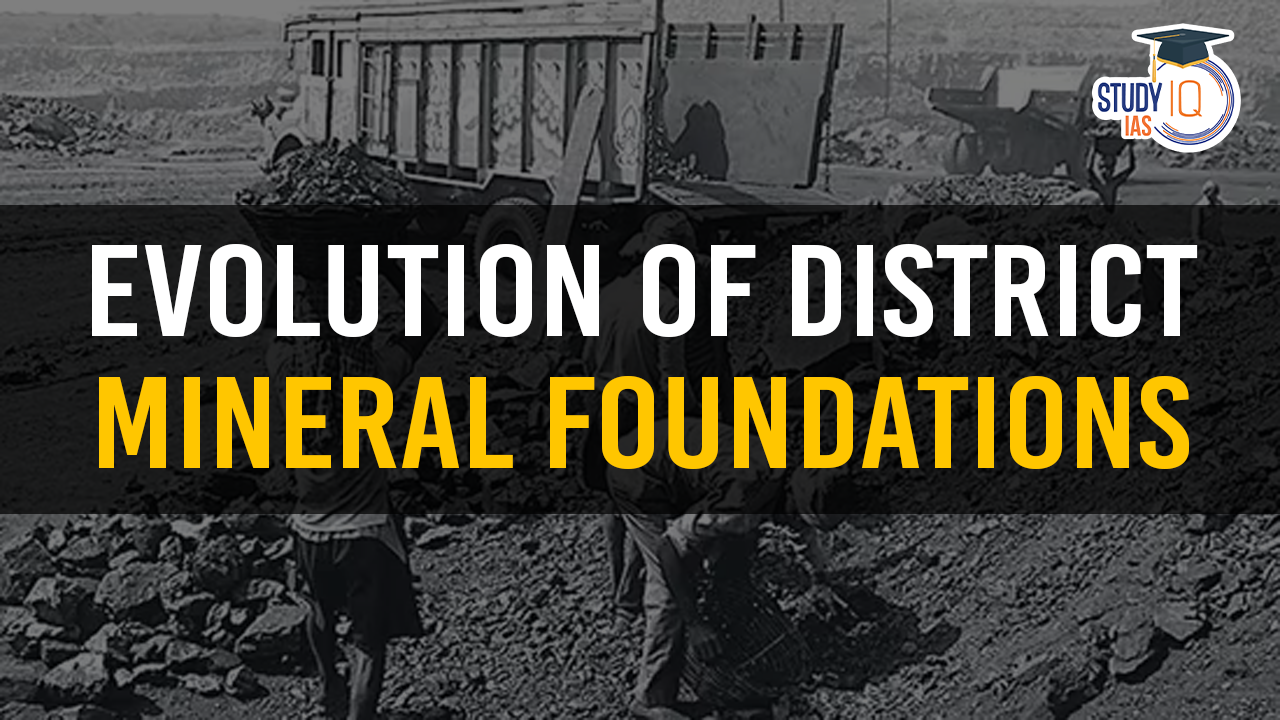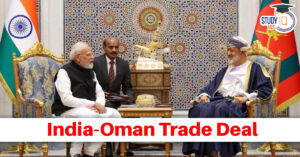Table of Contents
District Mineral Foundations Introduction
- The District Mineral Foundation (DMF) was established as part of the 2015 amendment to the Mines and Minerals (Development and Regulation) Act, driven by Prime Minister Narendra Modi’s vision of involving local communities in resource-led development.
- The purpose of the DMF is to serve the interests and welfare of individuals and regions impacted by mining activities, in accordance with the guidelines set by the State Government.
- Over the past decade, the DMF has grown into a significant vehicle for decentralised, community-centric development, particularly in mining-affected districts across India.
Key Developments and Achievements
- Transformation of Coal Block Allotment and Mining Areas:
- In 2012, the Comptroller and Auditor General of India’s report highlighted the losses from coal block allocations between 2004 and 2009.
- By 2015, the Modi government mandated auctions for mineral block allocations and introduced DMFs to ensure local community participation in the development.
- DMFs are funded by licensees and leaseholders, contributing a portion of their royalty payments, which is then used for development work in mining-affected regions.
- Significant Corpus for Community-Centric Development:
- Over ten years, DMFs have accumulated a corpus of nearly ₹1 lakh crore.
- This corpus has funded three lakh projects across 645 districts in 23 states, transforming mining regions into centres for development and addressing local community needs.
- The DMF efforts are aligned with the Pradhan Mantri Khanij Kshetra Kalyan Yojana (PMKKKY), which seeks to minimise the impact of mining on local populations and ensure sustainable livelihoods.
| District Mineral Foundation Day |
|
Its Impact
- Women Entrepreneurs in Odisha: Women from self-help groups set up by DMFs in Odisha have become artisans and budding entrepreneurs, showcasing the empowerment of women in rural areas.
- Youth in Katni, Madhya Pradesh: DMFs in Katni are helping youth gain skills in drone technology, leading to employment opportunities and new career pathways.
- National Critical Minerals Mission: DMF complements India’s National Critical Minerals Mission, which aims to secure resources in strategic minerals. DMFs play a crucial role in ensuring the welfare of local communities in mining areas, enhancing India’s global mineral footprint.
Governance and Efficiency Improvements
- Cooperative Federalism and Transparency:
- The DMF model reflects cooperative federalism, with the involvement of central, state, and local governments.
- District Collectors lead the implementation of DMF funds to address the specific needs of mining-affected regions.
- The launch of the National DMF Portal has digitised DMF operations, improving transparency and oversight of the projects.
- Innovative Approaches by DMFs:
- DMFs are fostering innovation at the local level, with initiatives like:
- Including elected representatives and non-elected gram sabha members in governance bodies.
- Establishing dedicated engineering departments to ensure efficient project implementation.
- DMFs are fostering innovation at the local level, with initiatives like:
- Long-Term Planning:
- DMFs are moving away from fragmented development approaches and are focusing on creating three-year development plans to achieve targeted goals.
- There is an effort to standardise best practices across all DMFs while considering local context and knowledge.
- Integration with Central and State Schemes:
- DMFs are aligning their goals with ongoing central and state schemes, particularly in aspirational districts, and contributing to achieving Sustainable Development Goals (SDGs).
- DMFs are also supporting forest dwellers through projects related to the plantation, collection, and processing of medicinal herbs.
DMFs as a Tool for Inclusive Governance
Convergence of Resources
- DMFs represent a unique convergence of central and state schemes, aligning national priorities with local needs to amplify impact.
- The funds and projects initiated by DMFs are transforming historically underserved regions by turning natural resource wealth into drivers of development.
Beyond Economic Empowerment
- The DMFs are helping reshape how natural resources are managed, balancing economic growth with social welfare and community rights.
- By nurturing local talent and providing opportunities, DMFs are ensuring that development reaches the most marginalised communities.
Conclusion
India’s DMF initiative is a transformative example of decentralised, community-led development. With nearly ₹1 lakh crore in funding and over three lakh projects in operation, DMFs are making a significant impact on mining-affected regions. Through innovations in governance, long-term planning, and convergence with national schemes, DMFs are helping India balance resource management with social welfare, setting an example for inclusive and sustainable development.


 Securities Markets Code Bill 2025: Towar...
Securities Markets Code Bill 2025: Towar...
 Weakly Interacting Massive Particles (WI...
Weakly Interacting Massive Particles (WI...
 India–Oman Trade Deal: CEPA Signed to ...
India–Oman Trade Deal: CEPA Signed to ...

























